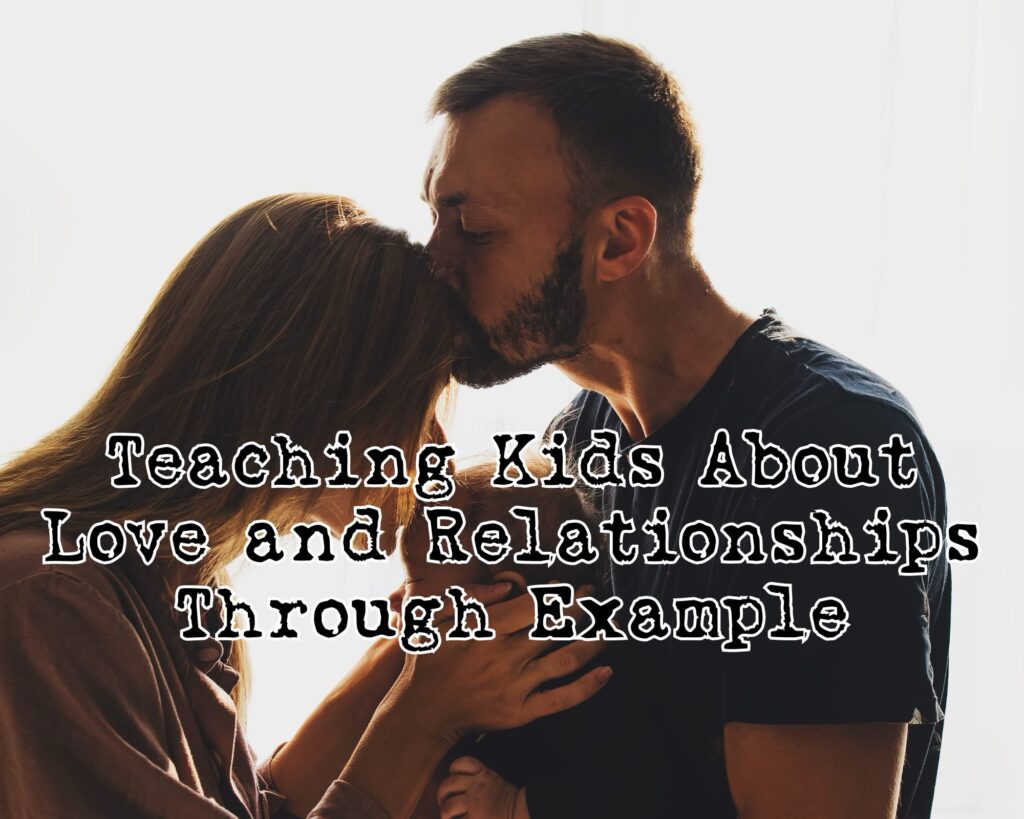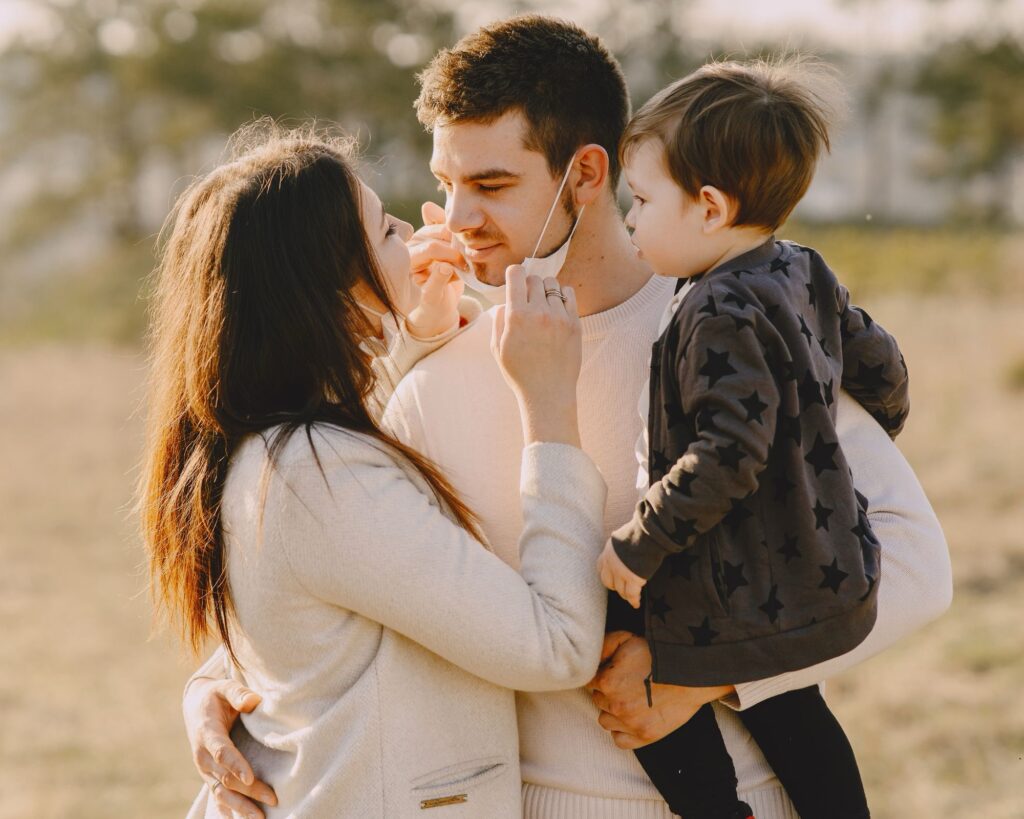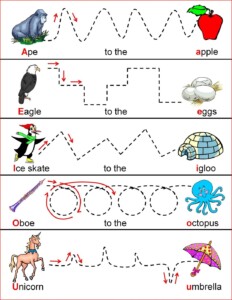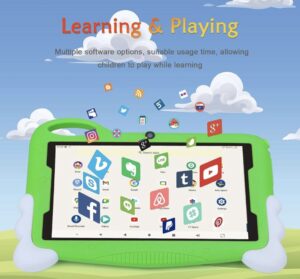
The Art of Love and Disagreement in Full View
Imagine this: You’re in the kitchen, the heart of the home, where last night’s lasagna has left its mark both on your waistline and the countertops. Amid the chaos of spilled cereal and the never-ending quest for a matching pair of socks, there’s a moment—a pause in the whirlwind of family life. You lean in for a kiss with your significant other, a simple act of love, as natural as breathing. Yet, in the background, the pitter-patter of little feet comes to a halt, and tiny eyes witness this display of affection.
Now, if you’re like me, you might think, “What’s the big deal?” It’s just a kiss, right? But oh, dear reader, in the age of social media oversharing and unsolicited advice, this innocent peck can unleash a storm of commentary. “Ew, why would you kiss like that with your kids around?” “Children don’t need/want to see their parents kiss.” “Parents shouldn’t show affection like that.” Yes, these are real critiques from the vast expanse of the internet, where everyone’s an expert on your life.
But here’s where I draw the line in the sandbox and stand firm: I wholeheartedly disagree with those statements. Why? Because showing our kids what a healthy, loving relationship looks like is one of the most precious gifts we can give them. It’s not just about the kisses or the hugs; it’s about letting them see, firsthand, the full spectrum of a committed relationship—the good, the bad, and the slightly annoying.
In our household, we’re an open book. Our kids see the affection, the teamwork, and yes, even the disagreements that come with marriage. They see us steal a quick kiss while packing lunches, share a long hug after a long day, and cuddle on the couch during movie night. But they also witness how we handle the not-so-perfect moments: the debates over trivial things, the discussions that get a bit heated, and how we navigate the path to resolution and understanding.
Why do we do this? Because we believe in teaching our kids by showing them. We want them to grow up knowing what love looks like, what respect sounds like, and what commitment feels like. We want them to understand that disagreements are a part of life, but it’s how you handle them that counts. We’re not just telling them; we’re showing them, day in and day out.
So, to the naysayers and the comment section critics, I say this: We will continue to kiss, to hug, to argue, and to make up—all in front of our children. Because if we don’t show them what a healthy relationship looks like, who will?
Join me as we dive deeper into why it’s not just okay but essential to show your kids the real, unfiltered picture of love and marriage. Let’s explore how these everyday moments of affection and resolution teach invaluable lessons about love, respect, and the beauty of commitment.

Why Is It Important for Children to See Their Parents Show Affection?
In a world where digital connections often overshadow personal ones, the importance of physical affection within the family unit cannot be overstated. When children see their parents sharing moments of genuine affection—be it a kiss goodbye in the morning, a warm embrace after a long day, or a comforting cuddle—these actions speak volumes. But why exactly is it so crucial for kids to witness these displays of love?
Building a Foundation of Security and Trust
First and foremost, when children observe their parents in loving interactions, it creates a sense of security and stability. These moments reassure them that love, in its most tangible form, is a constant in their lives. This foundation of trust and safety is pivotal in helping children form secure attachments in their own future relationships.
Modeling Healthy Relationship Dynamics
Children are like sponges, absorbing not just what they’re told but what they see. By openly showing affection, parents are teaching their children what a loving, respectful partnership looks like. This education goes beyond words, providing a live demonstration of how partners can care for and support each other. For insights into the nuances of communication within a relationship, 7 Things You Should Never Say to Your Wife or Girlfriend offers a guide on what to avoid, emphasizing the power of positive, affectionate interactions.
Encouraging Emotional Expression
Seeing parents express love openly encourages children to be comfortable with their own emotions. It teaches them that expressing love, gratitude, and affection is not only acceptable but encouraged. This emotional intelligence is a critical skill that will aid them throughout their lives, in both personal and professional relationships.
The Balance of Public and Private Affection
While it’s important for children to see their parents show affection, it’s equally important to maintain a balance. The goal is to demonstrate healthy affection without crossing boundaries or making anyone uncomfortable. It’s about finding those moments that naturally lend themselves to a gentle touch or a loving word.
Affection in Action: Beyond the Physical
Showing affection isn’t limited to physical gestures; it’s also about the small acts of love that fill the day. Whether it’s Discovering the Magic of Personalized Jewelry as a token of love or simply holding hands while walking through the grocery store, these actions reinforce the idea that love is both spoken and shown.
In essence, by showing affection in front of their children, parents are laying the groundwork for the next generation’s understanding of love, respect, and emotional connectivity. It’s a lesson that transcends the immediate family, influencing how children will interact with the world and form relationships of their own. As we navigate the complexities of parenting, let’s remember the profound impact our demonstrations of love have on our children’s perception of what it means to love and be loved.

How Can Parents Teach Their Kids About Love and Relationships?
Teaching kids about love and relationships goes beyond the birds and the bees talk; it’s a daily demonstration of respect, understanding, and affection. As parents, our interactions not only with our partners but also with those around us serve as the first classroom for our children’s understanding of relationships. Here’s how we can ensure we’re teaching the right lessons:
Lead by Example
The most powerful lessons are those lived, not lectured. When children see their parents navigating the complexities of a relationship with kindness, respect, and love, they learn to mirror these behaviors. It’s about showing them what a healthy relationship looks like in action—how to communicate effectively, how to show appreciation, and how to resolve conflicts in a constructive manner. For insights into behaviors that strengthen a relationship, 6 Things Men Do That Women Find Irresistibly Attractive highlights the importance of actions and attitudes that contribute to a loving partnership.
Open Conversations
Creating an environment where feelings and thoughts about relationships can be openly discussed without judgment encourages children to form their own understanding of love and relationships. It’s about answering their questions honestly and age-appropriately, providing guidance when they’re navigating their own friendships and relationships.
Teach the Value of Self-Love and Independence
A crucial part of teaching about relationships is emphasizing the importance of self-love and independence. Encouraging children to pursue their interests, to be comfortable spending time alone, and to value their own company teaches them that while relationships are enriching, they are not the sole source of happiness or self-worth.
Show the Realities of a Relationship
While it’s important to model love and affection, it’s equally important to show that disagreements and conflicts are normal aspects of any relationship. By constructively resolving conflicts and showing how to apologize and forgive, parents can teach their children valuable lessons about compromise, empathy, and the importance of maintaining respect even in difficult times. Nurturing Faith: Guiding Your Children in the Art of Prayer can also offer a perspective on how shared values and beliefs can strengthen a relationship and provide a common ground for resolving conflicts.
Encourage Healthy Social Interactions
Encouraging children to build healthy friendships from a young age lays the groundwork for understanding how to interact in a relationship later in life. It’s about teaching them to be kind, to listen, to share, and to respect others’ boundaries—skills that are foundational for any healthy relationship.
By actively engaging in these practices, parents can provide their children with a robust framework for understanding love and relationships. It’s not just about the affection we show our partners but also about the respect, communication, and empathy we demonstrate in all our relationships. Through our example, we can teach our children not just to look for love but to be sources of love in their own lives.

What Impact Does Seeing Healthy Disagreements Have on Children?
In the grand tapestry of family life, not every thread is vibrant and smooth. Some are tangled, knotted, and a bit rough to the touch. Disagreements and conflicts are natural colors in this tapestry, and how we handle these moments in front of our children can leave lasting impressions. Let’s dive into why witnessing healthy disagreements is not just inevitable but beneficial for our little ones.
Learning Conflict Resolution
When children see their parents disagree but then work through the conflict constructively, they’re attending a master class in conflict resolution. They learn that disagreements are a part of life, but it’s how you handle them that matters. It’s crucial for kids to understand that having a different opinion doesn’t mean the end of a relationship; rather, it’s an opportunity for growth and understanding.
Understanding Emotional Expression
Healthy disagreements provide a window into the world of emotions and how to express them appropriately. Children learn that it’s okay to feel frustrated, angry, or upset, and more importantly, they learn healthy ways to communicate those feelings. This emotional vocabulary is a critical tool in their own relationships, both now and in the future.
The Importance of Apologizing and Making Up
Perhaps one of the most valuable lessons children can learn from observing their parents’ disagreements is the art of apologizing and reconciling. Seeing their parents say “I’m sorry” and make amends teaches children about humility, forgiveness, and the strength of love. It shows them that pride should never be a barrier to healing a rift. For parents looking for guidance on navigating these moments, The Ultimate Guide to the Best Jungle Gym for Kids might seem like a leap, but it’s a metaphor for the ups and downs of relationships and the joy found in overcoming obstacles together.
Modeling Respectful Communication
In every healthy disagreement, there’s a thread of respect that never frays. Children who see their parents disagree respectfully—listening to each other, not interrupting, and avoiding hurtful words—learn the importance of respect in all forms of communication. This respect is the foundation upon which they’ll build their own interactions with friends, teachers, and future partners.
Normalizing Differences in Opinion
Finally, witnessing healthy disagreements normalizes the concept of differing opinions within a loving relationship. It teaches children that it’s possible to disagree with someone and still love and respect them deeply. This understanding is crucial in developing tolerance and empathy towards others, even in the face of disagreement.
In essence, the way we navigate disagreements in front of our children can teach them about resilience, respect, and the richness of human emotion. By modeling healthy conflict resolution, we’re not just resolving our own issues; we’re teaching our children how to face their own conflicts with grace and understanding.

How Do Apologies and Making Up Teach Kids About Emotional Intelligence?
After the storm of disagreement comes the calm of reconciliation. It’s in these moments of making up and apologizing that some of the most profound lessons are imparted to our children, lessons that significantly bolster their emotional intelligence. Let’s explore how these acts of contrition and forgiveness serve as critical teaching moments.
The Power of Apology
First and foremost, saying “I’m sorry” is an act of humility and vulnerability. When parents apologize to each other in front of their children, they’re teaching them that everyone makes mistakes, but owning up to them is a sign of strength, not weakness. This lesson in accountability is crucial for children to learn early on, as it encourages them to take responsibility for their actions.
Moreover, an apology is a demonstration of empathy. It shows children that their parents are capable of understanding and caring about the feelings of others. This modeling helps children develop their own sense of empathy, a key component of emotional intelligence.
The Art of Making Up
The process of making up after a disagreement is equally instructive. It teaches children about the importance of forgiveness and moving forward. They learn that holding onto anger or resentment is less important than maintaining a loving relationship. This understanding is vital for their future interactions and relationships, teaching them to value connection over being right.
Communication and Resolution
The discussions that often accompany apologies and making up are rich with lessons in communication. Children observe how their parents express their feelings, listen to each other, and work together to find a resolution. This exposure to effective communication strategies is invaluable, equipping children with the tools they need to express themselves clearly and listen actively.
Setting the Stage for Healthy Relationships
By witnessing apologies and reconciliations, children get a glimpse into the dynamics of a healthy relationship. They see that disagreements don’t diminish love but that facing and overcoming challenges together can strengthen it. This sets a powerful example for children, showing them what to strive for in their own relationships.
Incorporating resources like Nurturing Faith: Guiding Your Children in the Art of Prayer can complement these lessons by teaching children about forgiveness, compassion, and understanding from a spiritual perspective. It’s another layer of learning that reinforces the values of empathy and reconciliation.
In essence, the acts of apologizing and making up are not just about resolving the immediate conflict. They’re opportunities to teach children about the complexities of human emotions and relationships. Through these actions, parents can instill values of empathy, communication, and emotional resilience—key components of emotional intelligence that will serve children well throughout their lives.
As an Amazon Associate we earn from qualifying purchases through some links in our articles.



